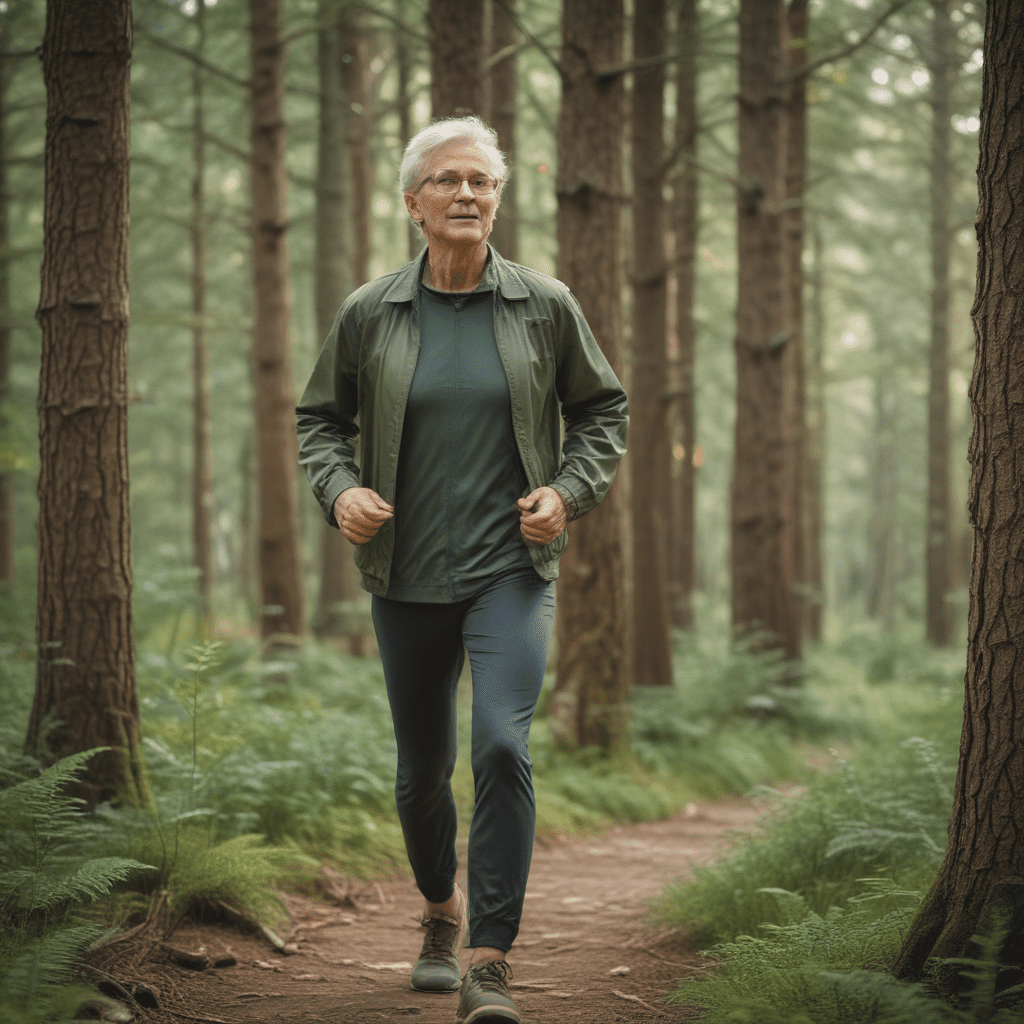
1. Introduction: The Importance of Exercise and Nature Immersion for Seniors
As we age, maintaining our physical, mental, and emotional well-being becomes increasingly important. Exercise is widely recognized for its numerous health benefits, and recent research has emphasized the profound impact of nature immersion for seniors. Exercise forest bathing, a unique combination of these two elements, offers an innovative approach to promote holistic wellness among the elderly population.
2. Forest Bathing: A Brief Overview and Historical Context
Forest bathing, known in Japan as "shinrin-yoku," is a practice involving spending time in nature, specifically forests, to enhance overall health and well-being. Originating in Japan in the 1980s, forest bathing has gained international recognition for its therapeutic effects and is now widely practiced in various countries worldwide.
3. Physiological Benefits of Forest Bathing for Seniors: Reduced Stress and Anxiety
Numerous studies have demonstrated the physiological benefits of forest bathing for seniors. Exposure to natural environments has been found to reduce stress and anxiety levels. The presence of phytoncides, volatile organic compounds released by plants, has calming effects on the nervous system, leading to decreased heart rate and blood pressure. Additionally, the tranquil surroundings of forests promote relaxation and mindfulness, further contributing to stress reduction.
4. Psychological Benefits of Forest Bathing for Seniors: Improved Mood and Cognitive Function
Forest bathing has also been associated with improved mood and cognitive function in seniors. Spending time in nature has been shown to enhance positive emotions, reduce depression symptoms, and improve overall well-being. The immersive experience of forest bathing stimulates the senses, promotes creativity, and encourages mental clarity.
5. Cardiovascular Benefits of Forest Bathing for Seniors: Lower Blood Pressure and Improved Heart Health
Forest bathing offers significant cardiovascular benefits for seniors. Studies have shown that regular exposure to forest environments can lower blood pressure, improve heart rate variability, and reduce the risk of cardiovascular diseases. The combination of reduced stress, increased physical activity, and the presence of phytoncides contributes to these positive effects on heart health.
6. Respiratory Benefits of Forest Bathing for Seniors: Enhanced Lung Function and Reduced Inflammation
Forest bathing has been found to have beneficial effects on respiratory health in seniors. Exposure to fresh air and the volatile organic compounds released by trees can help improve lung function, enhance oxygen uptake, and reduce respiratory inflammation. Spending time in nature can also alleviate respiratory symptoms associated with allergies, asthma, and other respiratory conditions.
7. Immune System Benefits of Forest Bathing for Seniors: Increased Natural Killer Cell Activity
Forest bathing has been shown to boost the immune system in seniors. The exposure to natural environments and the presence of phytoncides stimulate the production of natural killer cells, which play a crucial role in protecting the body from viruses and infections. Increased natural killer cell activity can improve overall immune function and reduce the risk of age-related illnesses.
8. Social and Community Benefits of Forest Bathing for Seniors: Enhanced Socialization and Sense of Belonging
Forest bathing fosters social and community connections among seniors. Participating in group forest bathing activities encourages socialization and provides opportunities for meaningful interactions, reducing feelings of isolation and loneliness. The shared experience of being in nature can create a sense of belonging and community, promoting social well-being.
9. Practical Considerations for Forest Bathing for Seniors: Safety, Accessibility, and Gear
When planning forest bathing activities for seniors, safety precautions should be prioritized. Choosing well-maintained trails and avoiding extreme weather conditions are essential. Accessibility is key, with trails that cater to varying mobility levels. Comfortable hiking shoes and appropriate clothing for weather conditions are recommended. Walking poles or trekking sticks can provide stability on uneven terrain.
10. Conclusion: The Transformative Power of Exercise Forest Bathing for Seniors
Exercise forest bathing offers a multifaceted approach to promoting holistic wellness among seniors. The combination of physical exercise and nature immersion provides physiological, psychological, cardiovascular, respiratory, immune system, and social benefits. By engaging in forest bathing, seniors can enhance their physical health, improve their mental well-being, and foster their social connections. The transformative power of exercise forest bathing can empower seniors to live healthier, happier, and more fulfilling lives.
FAQs:
Q: How often should seniors participate in forest bathing?
A: Regular forest bathing is recommended, even short daily walks in green spaces can provide benefits. Aim for at least two to three sessions per week for optimal effects.
Q: What are the contraindications for forest bathing?
A: Forest bathing is generally safe for most seniors. However, individuals with severe mobility impairments or respiratory conditions should consult a healthcare professional before participating.
Q: Can forest bathing be incorporated into other exercise activities?
A: Yes, forest bathing can be combined with activities such as hiking, walking, or Tai Chi to enhance the overall benefits.


